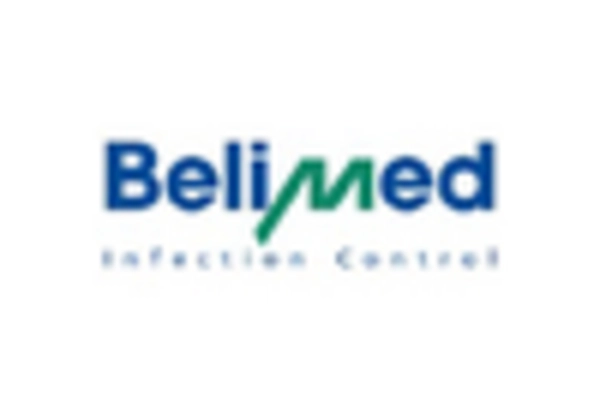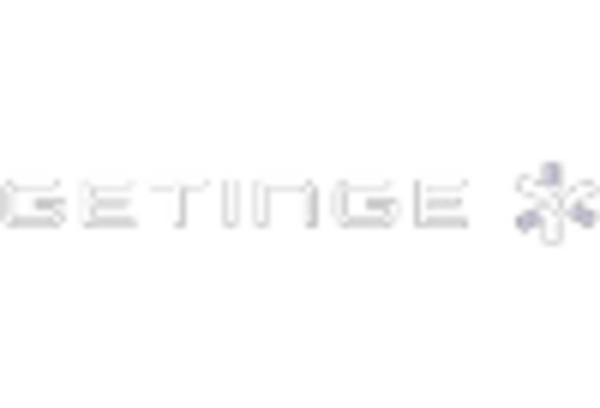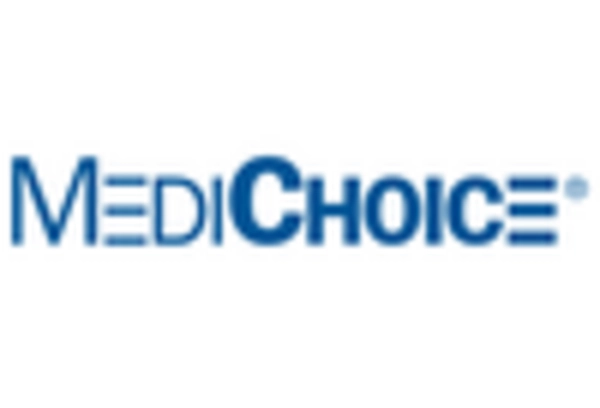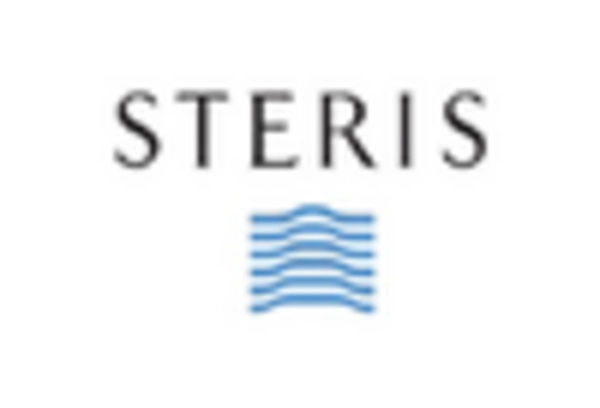Stringent Regulatory Frameworks
The Sterilant Market is significantly influenced by stringent regulatory frameworks that govern sterilization practices. Regulatory bodies, such as the Food and Drug Administration and the Environmental Protection Agency, impose rigorous standards to ensure the safety and efficacy of sterilants used in healthcare settings. Compliance with these regulations is essential for manufacturers, as it not only affects product approval but also impacts market access. The increasing focus on patient safety and environmental sustainability has led to the introduction of more comprehensive regulations, which in turn drives innovation within the Sterilant Market. Companies are compelled to develop products that not only meet regulatory requirements but also align with best practices in infection control. This dynamic creates opportunities for growth and differentiation among market players.
Rising Demand for Infection Control
The Sterilant Market experiences a notable surge in demand driven by the increasing emphasis on infection control across various sectors. Healthcare facilities, including hospitals and clinics, are prioritizing sterilization processes to mitigate the risk of healthcare-associated infections. According to recent data, the market for sterilants is projected to grow at a compound annual growth rate of approximately 8% over the next few years. This growth is largely attributed to heightened awareness regarding hygiene and safety protocols, particularly in surgical environments. Furthermore, the rise in outpatient procedures necessitates stringent sterilization practices, thereby propelling the Sterilant Market forward. As a result, manufacturers are innovating to provide effective and efficient sterilization solutions that meet the evolving needs of healthcare providers.
Expansion of Healthcare Infrastructure
The expansion of healthcare infrastructure is a critical driver for the Sterilant Market. As new hospitals, clinics, and surgical centers are established, the need for effective sterilization solutions becomes increasingly paramount. This expansion is particularly pronounced in emerging markets, where investments in healthcare facilities are on the rise. Data indicates that the healthcare infrastructure sector is projected to grow at a rate of 10% annually, thereby creating a substantial demand for sterilants. This growth not only enhances access to healthcare services but also necessitates the implementation of stringent sterilization protocols to ensure patient safety. Consequently, the Sterilant Market is poised to benefit from this trend, as manufacturers respond to the increasing requirements for sterilization in newly developed healthcare settings.
Technological Innovations in Sterilization
Technological advancements play a pivotal role in shaping the Sterilant Market. Innovations such as low-temperature sterilization methods and the development of advanced sterilant formulations are enhancing the efficacy and efficiency of sterilization processes. For instance, the introduction of hydrogen peroxide vapor and ozone sterilization technologies has revolutionized the way medical instruments and devices are sterilized. These technologies not only ensure thorough sterilization but also reduce the time required for the process, which is crucial in high-demand healthcare settings. Market data indicates that the adoption of these advanced technologies is expected to increase, with a projected market share growth of around 15% in the next five years. This trend underscores the importance of continuous research and development in the Sterilant Market to meet the diverse needs of end-users.
Growing Awareness of Environmental Sustainability
The Sterilant Market is witnessing a shift towards environmentally sustainable practices, driven by growing awareness of ecological impacts. Stakeholders are increasingly seeking sterilization solutions that minimize environmental footprints while maintaining high efficacy. This trend is evident in the rising demand for eco-friendly sterilants, such as those derived from natural sources or designed to be biodegradable. Market Research Future suggests that the eco-friendly sterilant segment is expected to grow by approximately 20% in the coming years, reflecting a broader commitment to sustainability within the healthcare sector. As healthcare providers strive to balance effective sterilization with environmental responsibility, the Sterilant Market is likely to adapt by offering innovative solutions that cater to this dual demand.

















Leave a Comment